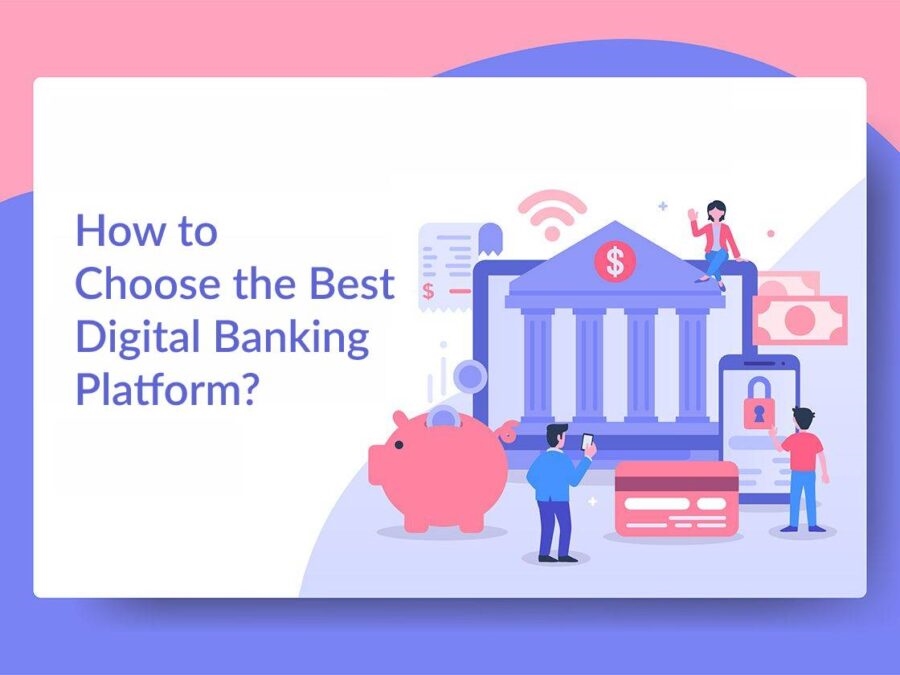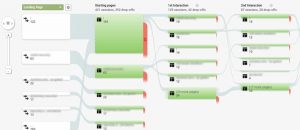Digital banking is now the customer’s first demand when most of the things are going for digitalization. The incorporation of technology in the banking operation brings mutual benefit to the bank and end consumer as well.
According to Forrester’s Global Financial Services Architecture Survey, about 80% of bank owners say they don’t have the required technology to serve their customers. This is a great challenge in the market.
So what’s the solution? The adoption of the digital banking platform is the only solution to turn traditional banking into a technical landscape. This could give a boon solution to all the digital requirements of the financial institute. However, certain things are mandatory for financial institutes to look into the platform.
A Digital Banking Platform: A brief introduction
A digital banking platform makes it easy for a traditional bank into a truly digital bank. This brings automation to the process and also leaves a marvellous impact on the customer relationship. The digital transformation is also helpful for the banking firms to offer their products and services in digital form. This platform works in three directions to complete the transformation of the bank.
It represents the virtual process that embraces online baking and more. Due to the end to end platform, it has a front end for the consumer and a back end for the banking admin.
Customer focus:
This is related to strong customer loyalty. While adopting a strong digital platform, a bank could provide a personalized product to the end-user. This will attract the new customer bonding concept.
Internal optimization:
This automates the business process, integrates the channels and also unifies the customer data for understanding the customer behaviour.
Ecosystem readiness:
The open architecture makes it easy for banks to connect to their ecosystem. For this purpose, there is the use of APIs and leverage open banking opportunities.
Things to focus on when choosing the digital banking platform:

Capability to capture the market with digital initiative:
A high-grade branchless banking system will give the speed of response to changing customer needs. In addition to that, the platform should be useful to convert complex digital banking solutions into simple one. The flexible platform architecture is good to consider.
By using a quality digital banking platform, it will be easy for financial institutes to launch their digital services quickly. This helps them to cover the gap between them and the targeted customers.
Omnichannel customer experience:
Keep in mind in today’s era, the only way to sate the customer’s need is to provide seamless digital service. The Omnichannel is something beyond the multiple access channel offering. It allows for the centralized orchestration of customer interactions. It is like a central hub at which a 360-degree view of the customer is possible. Therefore, omnichannel is another aspect that must be present in your mobile banking solution.
Configurable Digital Banking capabilities:
The off the shelf digital banking capabilities offer the best practices of digital banking. Some of them are customer on-boarding, strong customer authentication, different payment types, integrations, workflows and notifications.
One of the advantages of adopting the configurable digital banking platform is empowering the banking operation. You can go for any of your digital agendas. Meanwhile, you can also avoid any kind of risky distribution of the internal business process.
Open Banking:
Plug and Play financial products are enabled in the open banking world. In simple language, it means having a platform that gets you ready for the API economy with functionalities like API management, API gateway, strong customer authentication and consent management.
The open API makes it possible for your bank to provide value-added service to end-users.
Personal financial management service, remittances, insurance and bank account aggregation are such services that you could offer to customers. The financial institutes must understand the customers’ needs and offer a customized digital banking app.
Future proof micro-service architecture:
Micro-service architecture is good for the business of digital banking as it adds flexibility to the bank digital transformation. It will deliver the software applications continuously irrespective of the size and complexity of the project. With the help of this, the organization can strategically extend the platform using modular building blocks. Therefore, while selecting an agency banking solution always look for the micro-service architecture.
Enterprise Integration:
A digital banking platform should be capable enough to integrate with your core banking system. It should be easily mapped into the other systems of your banking. An integrated framework makes it easy for you to connect the business end to end to increase efficiency and focus. Additionally, the bank needs to provide 24/7 service regardless of the current market condition.
Verdict:
The present era is a highly competitive one. The conversion of the traditional banking form into the technical one is important to win the race. Financial institutes need to focus on a robust digital banking platform to acquire the milestone.
Business & Finance Articles on Business 2 Community
(145)
Report Post





